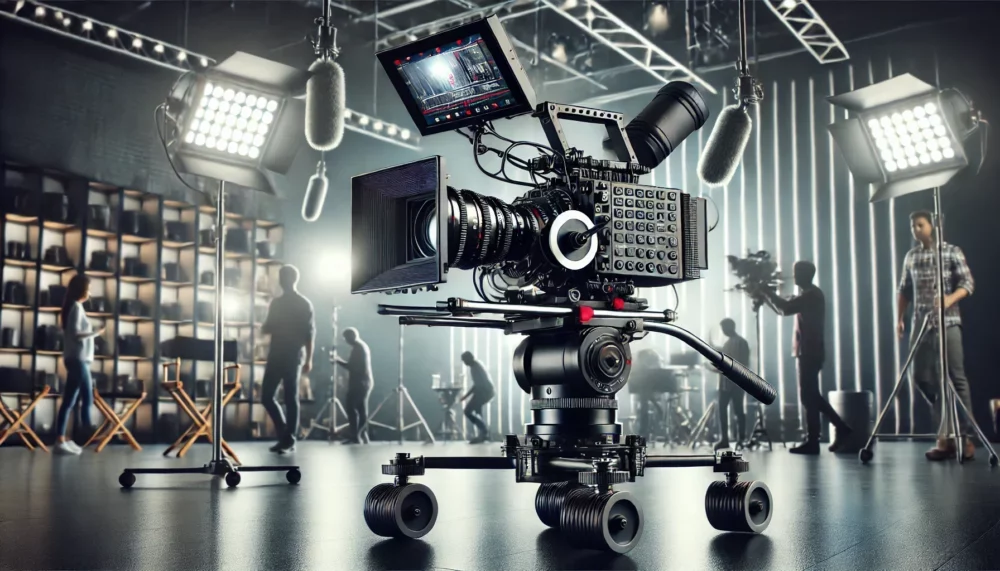Professional Video Cameras: Cinema and Broadcasting Technologies
Professional camcorders are advanced devices used for cinema, television broadcasting, documentary filming and high-quality content production. They are distinguished from amateur cameras by their image quality, functionality and technological superiority. Professional cameras used in the cinema and broadcasting industry offer unlimited possibilities for creative projects, supported by constantly developing technologies. In this article, the technical details of professional video cameras, the technologies used and innovations in the sector are discussed in detail.
1. Key Features of Professional Video Cameras
The main features of professional camcorders are their ability to capture high-quality footage and adapt to various shooting scenarios. Here are the highlights of these cameras:
- High Resolution: Capable of shooting 4K, 6K, 8K and even 12K.
- Wide Dynamic Range (HDR): Captures light and shadow details more realistically, creating cinematic images.
- Interchangeable Lenses: Wide angle, telephoto and macro lenses can be used for different shooting scenarios.
- RAW Format Support: Supports uncompressed video formats for greater editing flexibility.
- Professional Audio Inputs: High-quality audio can be recorded with XLR and other professional audio inputs.
- Durability: Made of materials resistant to harsh environmental conditions.
2. Cinema Cameras and Technologies Used
Cinema cameras are devices designed specifically for the needs of the film industry. They offer the highest level of performance in terms of image quality and color fidelity. Here are the key technologies of cinema cameras:
2.1 Sensor Technology
- Full Frame Sensors: Provides a wider viewing angle and superior performance in low light.
- Super 35 Sensors: A widely used standard in the motion picture industry and offers a cinematic look.
- Global Shutter: Prevents the "rolling shutter" effect in moving scenes.
2.2 Color Science
Cinema cameras offer superior performance in terms of color accuracy and color gradation:
- Log Profiles: Color profiles such as S-Log, C-Log and V-Log are used for a wider dynamic range.
- RAW Video: Provides maximum flexibility for color editing and post-production.
2.3 Lens Compatibility
Compatible with cinema cameras, PL-Mount, EF-Mount and other lens mounts. This makes it possible to use professional cinema lenses.
3. Broadcast Cameras and Technologies Used
Cameras for television broadcasting are designed for quick setup, live broadcast support and long-term use. Here are the highlights of broadcast cameras:
3.1 Live Streaming Support
- SDI and HDMI Outputs: Used for high quality video transmission.
- IP Broadcast Technology: Allows live broadcasting over the Internet.
- Remote Control: Allows remote control of camera settings.
3.2 Long-Term Shooting Capacity
Broadcast cameras are designed for long duration shooting:
- High Capacity Batteries: Provides enough energy for long shoots.
- Cooling Systems: Prevents the camera from overheating.
3.3 Multiple Camera Setups
Broadcast cameras support synchronization in multi-camera shoots and are used in live productions.
4. Next Generation Technologies
Professional video cameras are supported by constantly evolving technologies. Here are the next generation technologies:
- 8K and 12K Shooting: Provides higher resolution and detail.
- AI-Assisted Autofocus: Tracks moving objects more accurately.
- Virtual Production: Real-time background rendering technology with LED walls instead of green screen.
- Lightweight and Compact Designs: More portable and easy-to-use cameras.
Conclusion
Professional camcorders are indispensable tools for the film and broadcast industries. Supported by advanced sensor technologies, color science, lens compatibility and next-generation technologies, these cameras offer unlimited possibilities for creative projects. Choosing the right camera and using technology effectively is essential for success in the world of cinema and broadcasting.

